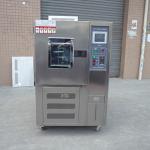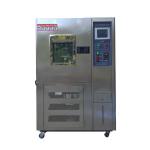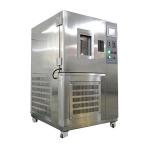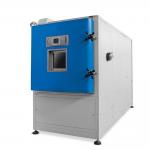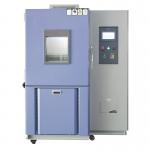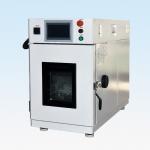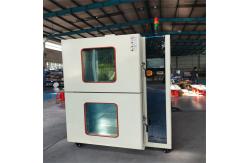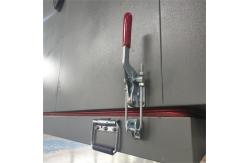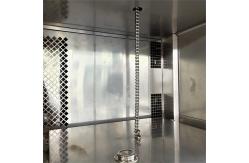In the realm of product testing and quality assurance, a
one-size-fits-all approach simply won't suffice. The Customized
Environmental Climatic Chamber stands as a testament to the power
of bespoke engineering, offering a flexible and highly adaptable
platform for simulating a vast array of environmental conditions.
This chamber is designed to meet the specific and often complex
requirements of diverse industries, ensuring that products are
rigorously evaluated and optimized for their intended real-world
applications. The Customized Environmental Climatic Chamber is a state-of-the-art
testing facility that can be precisely configured to replicate a
wide range of climatic and environmental parameters. It serves a
multitude of industries, including but not limited to electronics,
automotive, pharmaceuticals, food and beverage, and aerospace. The
primary goal is to subject products, components, or materials to
controlled environmental stressors such as temperature, humidity,
pressure, and even chemical and particulate exposures. By doing so,
manufacturers and researchers can gain invaluable insights into how
their products will perform and endure under different conditions,
enabling them to make informed decisions regarding design
improvements, material selection, and quality control. - Modular and Flexible Design
- The chamber is constructed with a modular framework that allows for
easy customization and expansion. The basic structure is engineered
to be highly adaptable, enabling the integration of various
optional components and subsystems. The exterior is made from
durable and corrosion-resistant materials, ensuring a long service
life even in harsh industrial environments. The interior is
designed with a smooth and non-reactive surface to prevent any
interference with the tested samples. The door is a key element of
the design, featuring a customizable sealing mechanism that can be
adjusted to meet specific requirements. It can be equipped with
single or multiple doors, depending on the size and access needs of
the chamber. The interior space can be partitioned or configured in
different ways to optimize the testing layout for different product
sizes and shapes.
- Precision Environmental Control Systems
- Temperature Control: Capable of maintaining an extensive
temperature range, from -80°C to +200°C, with an accuracy of
±0.3°C. This is achieved through a combination of advanced
refrigeration and heating technologies, such as multi-stage
refrigeration cycles and high-power resistance heaters. The control
system incorporates a highly accurate feedback loop, with
temperature sensors strategically placed throughout the chamber to
ensure uniform temperature distribution. The user-friendly control
panel allows for precise programming of temperature profiles,
including complex cycling sequences, ramp rates, and dwell times.
This enables the replication of real-world temperature variations,
such as the rapid temperature changes experienced during shipping
or the long-term temperature stability required for certain storage
applications.
- Humidity Control: The humidity control system can achieve humidity
levels ranging from 0% to 100% RH (Relative Humidity), with an
accuracy of ±2% RH. It utilizes a combination of steam humidifiers,
desiccant dehumidifiers, and chilled mirror hygrometers for
accurate measurement. The system is designed to handle both low and
high humidity requirements, making it suitable for testing in arid
deserts or humid rainforests. The air circulation system is
carefully engineered to ensure proper mixing of the humidified or
dehumidified air, preventing any local moisture imbalances. The
control system continuously monitors and adjusts the humidity
levels based on the programmed settings and real-time sensor
feedback.
- Pressure Control: For applications that require pressure
simulations, the chamber can be equipped with a pressure control
system. It can maintain a wide range of pressures, from vacuum
levels up to several atmospheres, with an accuracy of ±0.1 kPa.
This is crucial for testing products that will be used in
high-altitude or pressurized environments, such as aerospace
components or deep-sea equipment. The pressure control system is
integrated with safety features to prevent over-pressurization or
rapid pressure changes that could damage the samples or the chamber
itself.
- Chemical and Particulate Exposure: The chamber can be customized to
introduce specific chemical substances or particulate matter into
the testing environment. It can be equipped with gas injection
systems, aerosol generators, or dust feeders, allowing for the
simulation of exposure to pollutants, corrosive gases, or
industrial contaminants. The concentration and duration of the
exposure can be precisely controlled, enabling the evaluation of
how products will resist chemical degradation or the ingress of
particulate matter. This is especially important for industries
such as automotive, where components need to withstand exposure to
road salts and exhaust gases, or electronics, where circuit boards
must be protected from dust and corrosive vapors.
- Advanced Instrumentation and Data Acquisition
- The chamber is outfitted with a comprehensive suite of sensors and
instrumentation. In addition to temperature, humidity, and pressure
sensors, it can include sensors for measuring other parameters such
as gas concentrations, particulate density, light intensity, and
vibration. These sensors are connected to a high-performance data
acquisition system that records and stores all relevant data. The
data acquisition system offers a high sampling rate, typically
ranging from 100 to 1000 samples per second, ensuring that even the
most rapid changes in environmental conditions or sample responses
are accurately captured. The collected data can be accessed and
analyzed in real-time or retrieved later for in-depth studies. The
system is also compatible with a wide range of data analysis
software, allowing for the generation of detailed reports, graphs,
and statistical analyses.
|
